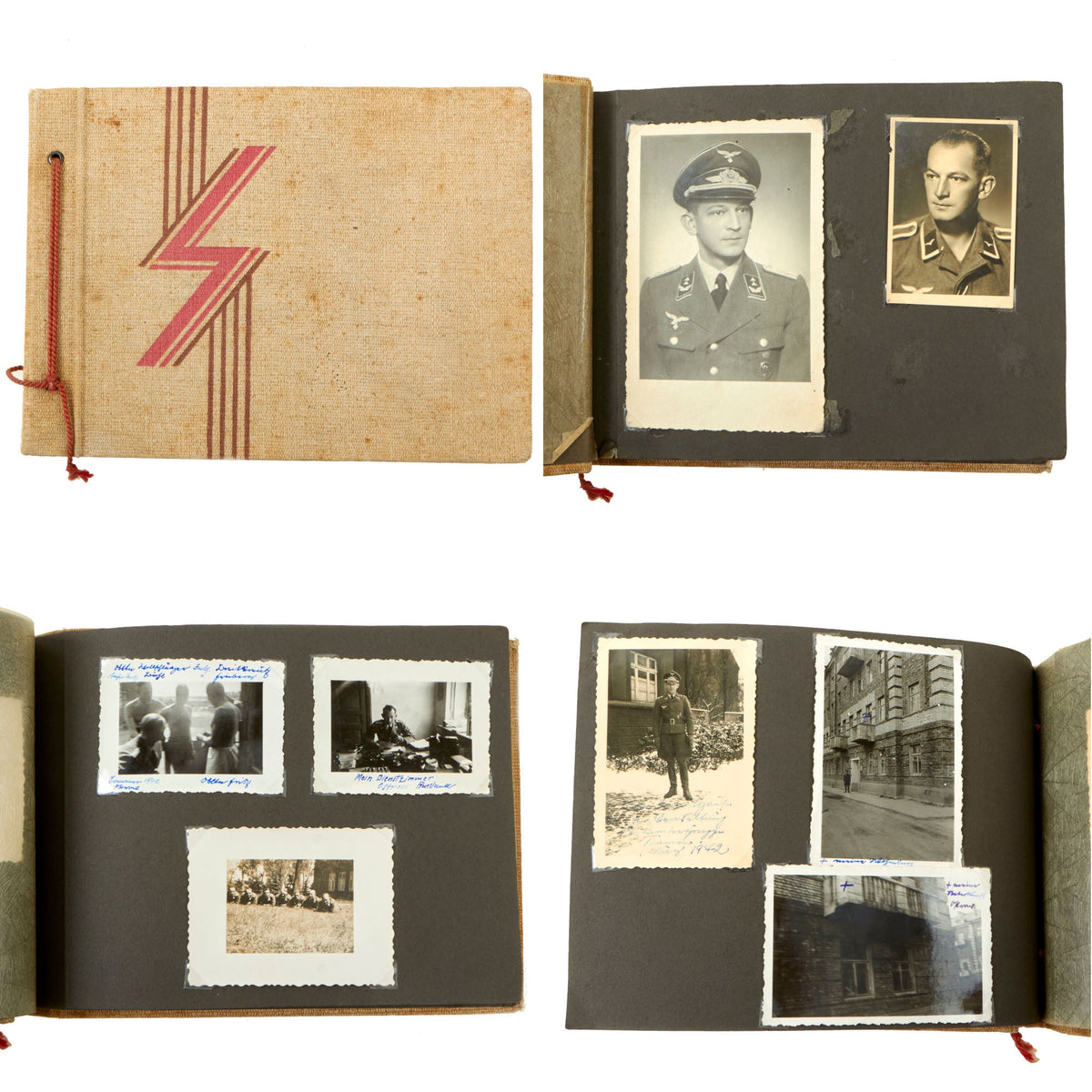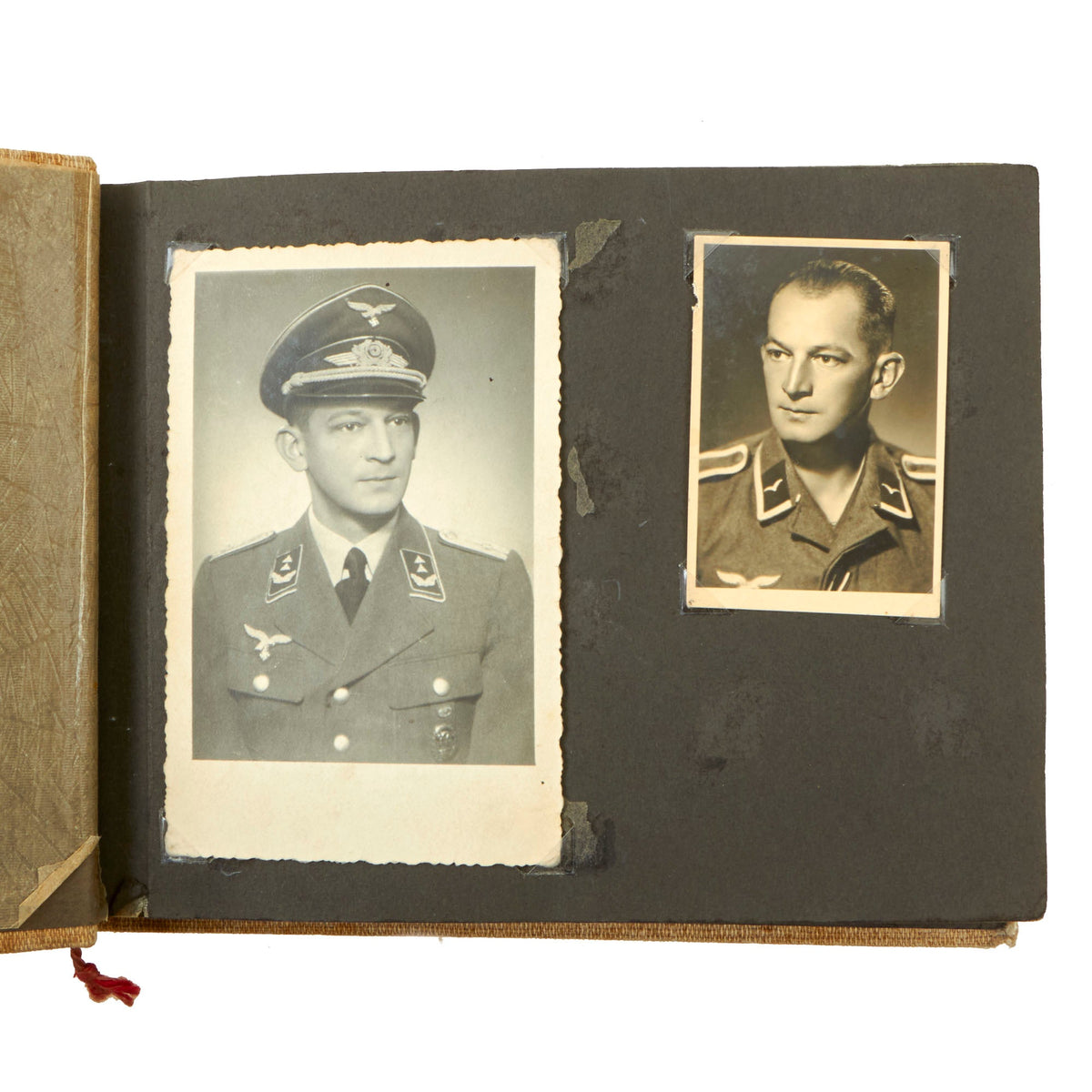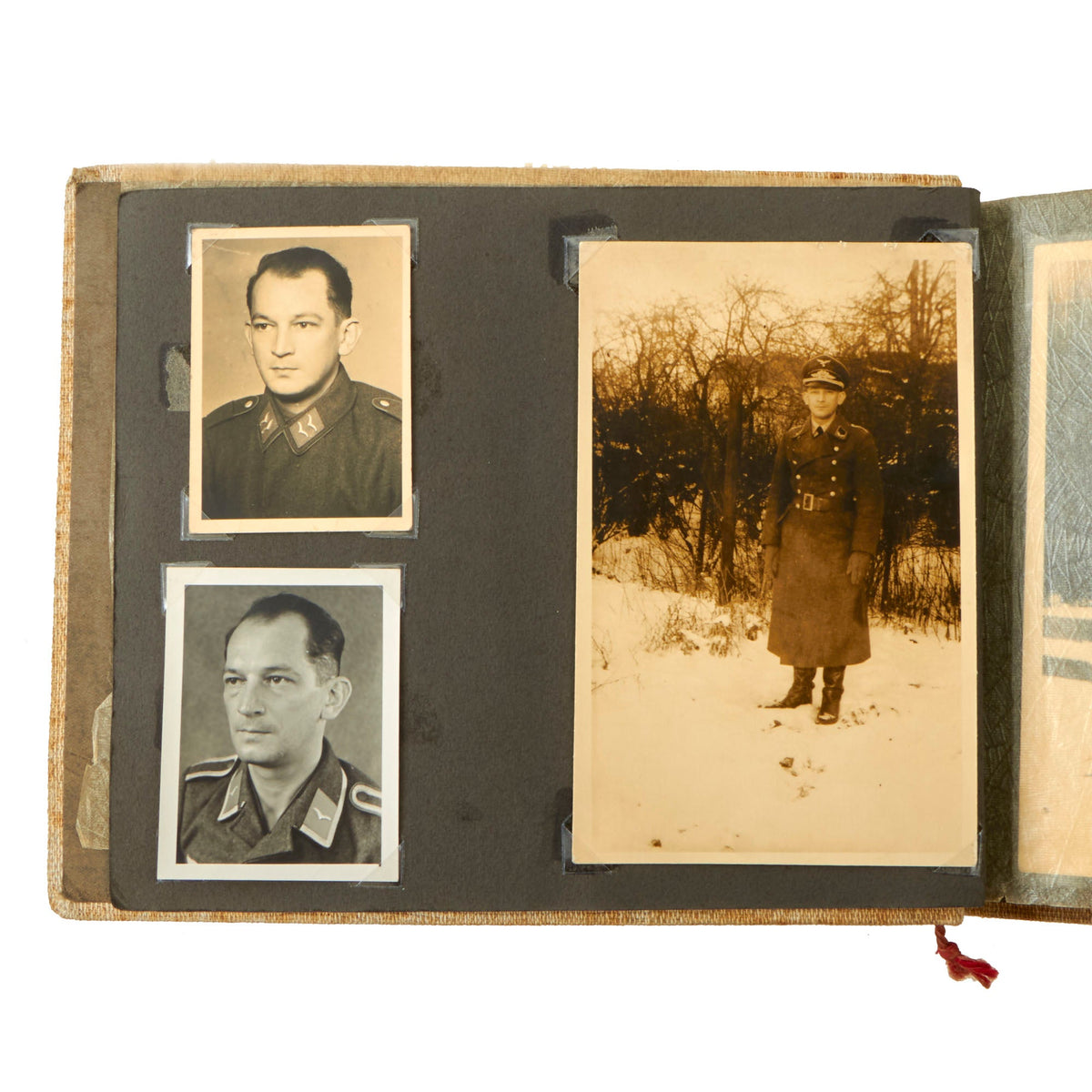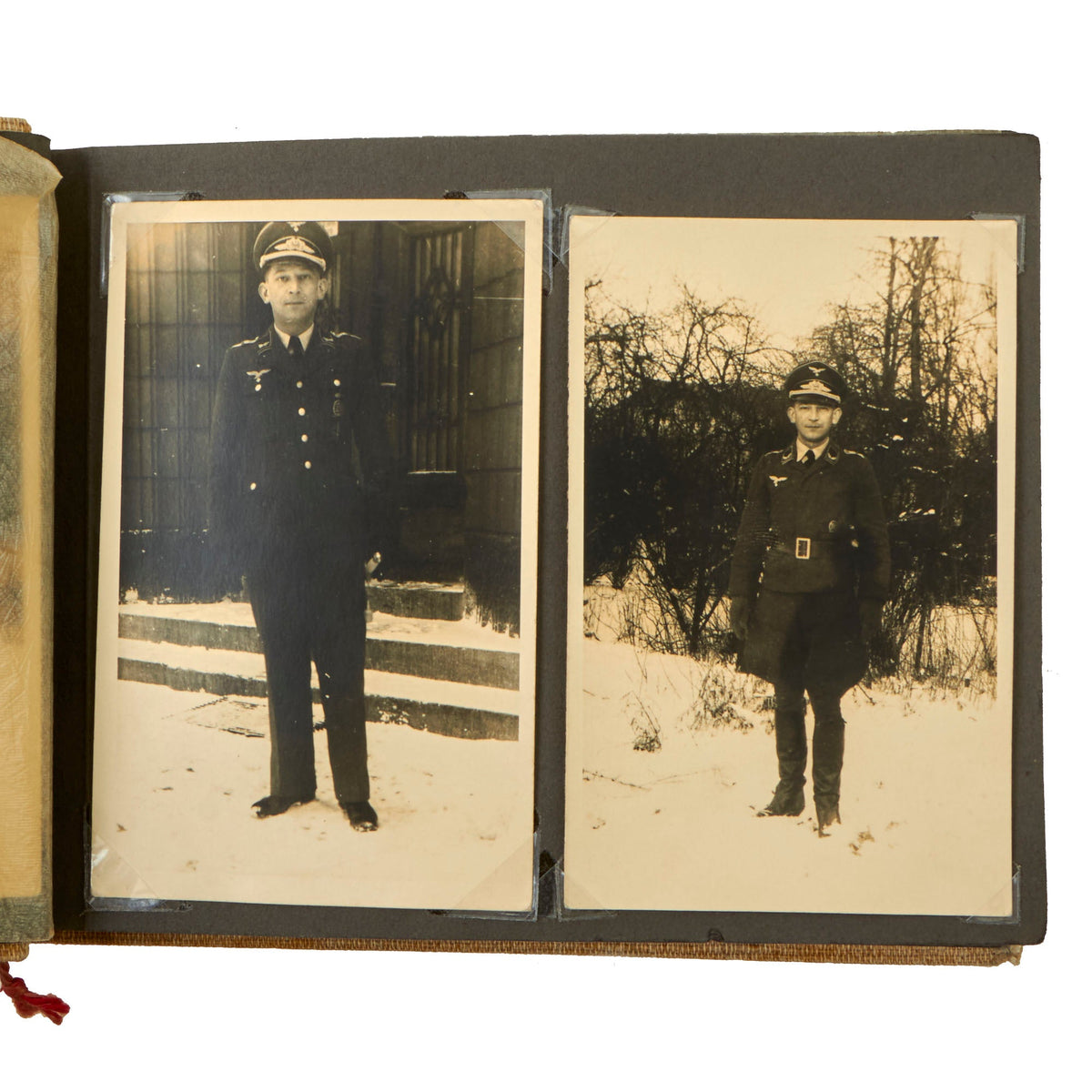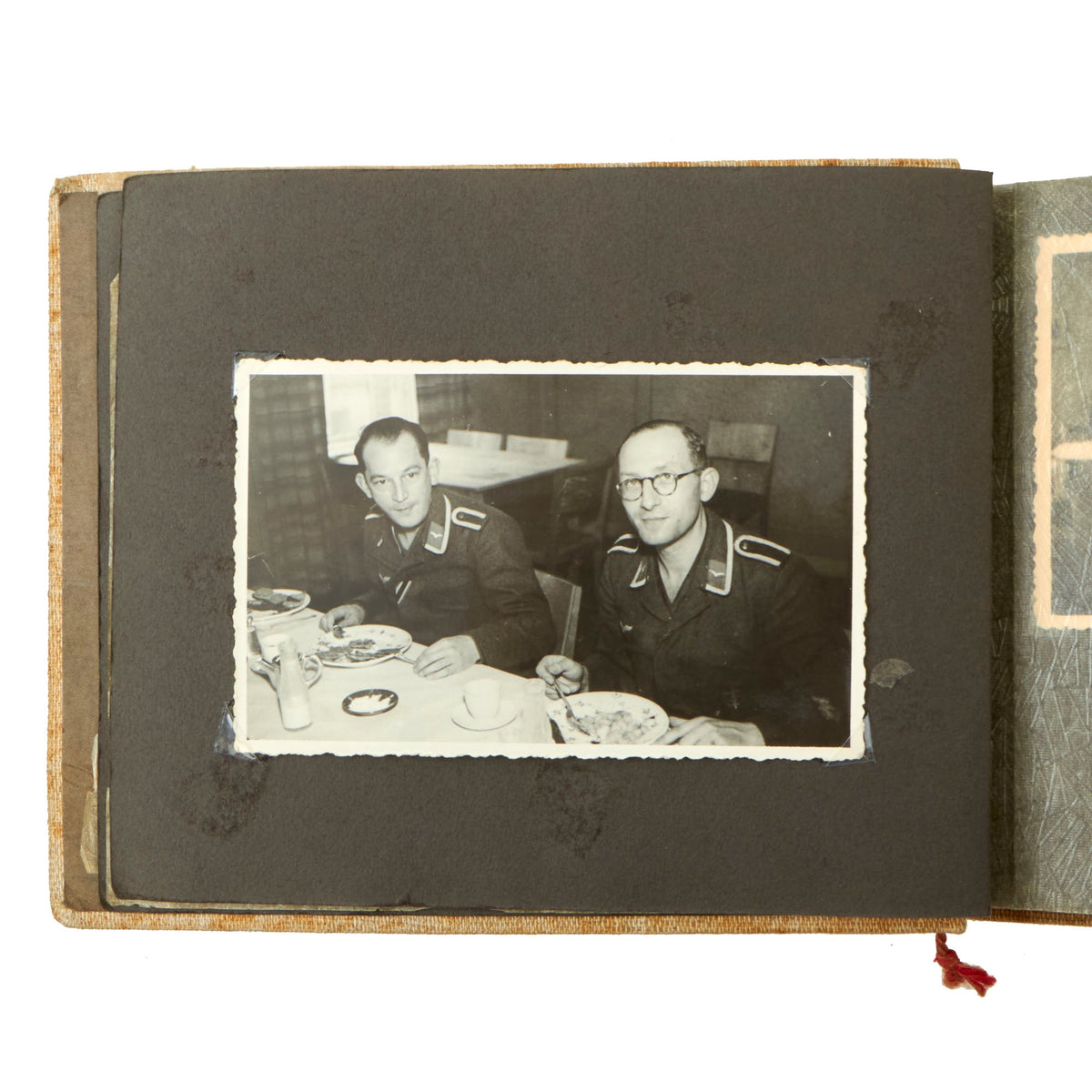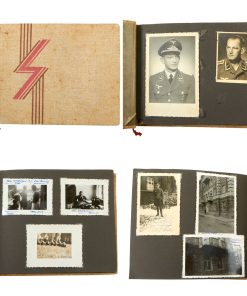Original German WWII Luftwaffe Administrative Official & NCO Personal Photo Album with Siegrune Marked Cloth Cover – 108 Pictures Original Items
$ 395,00 $ 118,50
Original Item: One-Of-A-Kind. This is a wonderful personal photo album with what looks to be mostly personal snapshots, which look to have come from the different areas of Germany. The first pages all show pictures of the same person, who in some pictures is pictured in the uniform of a Luftwaffe Administrative Official, while in other pictures they are a Luftwaffe NCO. It was fairly standard for administrative officials to have very different roles and rank levels when they were called up for combat. This individual looks to have held the administrative rank of Regierungsinspektor (Government Inspector), roughly equivalent to an Oberleutnant (1st Lieutenant) in the Luftwaffe. Their combat rank was Unteroffizier (Sergeant), though there are earlier pictures showing them as an enlisted Gefreiter (Airman). This person is pictured throughout the album in all manner of scenes, so we assume it covers a fairly large period of time.
The album has a very nice woven tan cover, which has a single red ᛋ Siegrune (Sig/Victory Rune) in the weave, so it’s possible that they were involved in the Deutches Jungvolk in some way, as that was their emblem. The album measures approximately 8 7/8″ x 6 5/8″, and features 24 pages, secured into the cover with a red cord. Between the pages are spiderweb pattern “onion skin” separators, which keep the photos from sticking together.
A total of 108 photographs fill this album, most held in place with corner tabs. We can see that photos have been removed on some pages and new photos added, but this looks to have been done period. There are also a few photos that have written captions! These look to be more recent, so the Veteran may have added them at some point long after the war. It’s very rare that we get collections that show the same individual in so many different areas, making this a great album full of research potential.
The album is a treasure-trove of images taken from the viewpoint of a young German soldier in the Luftwaffe. Historical records like this album have become priceless time capsules that provide an incomparable level of insight into the individual experience of the Second World War, now that over seventy years have passed.
Comes more than ready for further research and display!
The older albums such as these usually withstand the ravages of time. The leather or fabric covers may wear, but the pages stay well intact. The black paper albums of the early 20th century are more fragile, while the glue from magnetic albums can damage photographs. And, as with all old photographs, keep albums in a safe, climate controlled environment.
The Luftwaffe was the aerial-warfare branch of the German Wehrmacht before and during World War II. Germany’s military air arms during World War I, the Luftstreitkräfte of the Imperial Army and the Marine-Fliegerabteilung of the Imperial Navy, had been disbanded in May 1920 in accordance with the terms of the 1919 Treaty of Versailles which banned Germany from having any air force.
During the interwar period, the German armed forces secretly trained pilots – in violation of the Treaty – at Lipetsk Air Base in the Soviet Union. With the rise of the NSDAP (in power from 1933) and the repudiation of the Versailles Treaty, the Luftwaffe’s existence was publicly acknowledged on 26 February 1935, just over two weeks before open defiance of the Versailles Treaty through the announcement of German rearmament and conscription on 16 March. The Condor Legion, a Luftwaffe detachment sent to aid Nationalist forces in the Spanish Civil War, provided the force with a valuable testing-ground for new tactics and aircraft. Partially as a result of this combat experience, the Luftwaffe had become one of the most sophisticated, technologically advanced, and battle-experienced air forces in the world when World War II broke out in 1939. By the summer of 1939, the Luftwaffe had twenty
Fast Shipping with Professional Packaging
Thanks to our longstanding association with UPS FedEx DHL, and other major international carriers, we are able to provide a range of shipping options. Our warehouse staff is expertly trained and will wrap your products according to our exact and precise specifications. Prior to shipping, your goods will be thoroughly examined and securely secured. We ship to thousands clients each day across multiple countries. This shows how we're dedicated to be the largest retailer on the internet. Warehouses and distribution centres can be located throughout Europe as well as the USA.
Note: Orders with more than one item will be assigned a processing date depending on the item.
Before shipping before shipping, we'll conduct a thorough inspection of the items you have ordered. Today, the majority of orders will be delivered within 48 hours. The delivery time will be between 3-7 days.
Returns
The stock is dynamic and we cannot completely manage it because multiple stakeholders are involved, including our factory and warehouse. So the actual stock may alter at any time. It's possible that you may not receive your order once the order has been made.
Our policy is valid for a period of 30 days. If you don't receive the product within 30 days, we are not able to issue a refund or an exchange.
You can only return an item if it is unused and in the same state as the day you received it. You must have the item in its original packaging.
Related products
Uncategorized
Armored Burgonet Helmet & Polearm from Scottish Castle Leith Hall Circa 1700 Original Items
Uncategorized
Uncategorized
Uncategorized
Uncategorized
Armoured Fighting Vehicles of the World: AFVs of World War One (Hardcover Book) New Made Items
Uncategorized
Uncategorized
Uncategorized
Uncategorized
Uncategorized
Uncategorized
Uncategorized
Uncategorized
Uncategorized
Band of Brothers ORIGINAL GERMAN WWII Le. F.H. 18 10.5cm ARTILLERY PIECE Original Items
Uncategorized
Uncategorized
Uncategorized
Uncategorized
Angolan Rebel 1970s era 60mm Inert Display Mortar from Angolan Civil War Original Items
Uncategorized
Australian WWII Owen MK1 Machine Carbine SMG Custom Fabricated Replica with Sling Original Items
